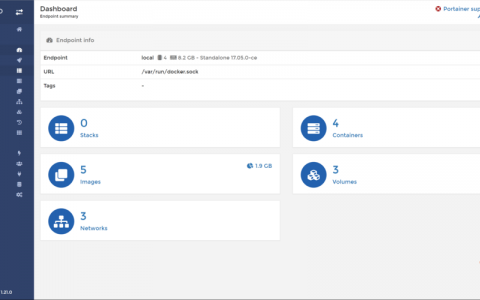在ASP开发中,显示网站目录是一项常见需求,例如用于文件管理、资源浏览或后台系统的文件列表展示,通过ASP内置的FileSystemObject对象,可以轻松实现对服务器端目录和文件的读取、遍历及显示,本文将详细介绍ASP显示网站目录的核心代码实现、功能扩展及安全性处理,帮助开发者掌握这一实用技能。

FileSystemObject对象概述
FileSystemObject(FSO)是ASP中用于操作文件系统的核心组件,支持创建、读取、修改、删除文件和目录,以及获取文件属性(如大小、修改时间等),使用前需通过Server.CreateObject方法创建实例:
<%
Set fso = Server.CreateObject("Scripting.FileSystemObject")
%> FSO提供了丰富的对象和方法,以下是常用方法及其功能(见表1):
| 方法名 | 功能描述 | 示例代码 |
|---|---|---|
GetFolder | 获取指定目录的Folder对象 | Set folder = fso.GetFolder("path") |
GetFile | 获取指定文件的File对象 | Set file = fso.GetFile("path") |
CreateFolder | 创建新目录 | fso.CreateFolder("path") |
FileExists | 检查文件是否存在 | fso.FileExists("path") |
FolderExists | 检查目录是否存在 | fso.FolderExists("path") |
基础目录显示代码实现
获取目录路径并遍历文件与子目录
假设需要显示网站根目录下的uploads,代码如下:
<%
' 定义目标目录路径(使用Server.MapPath将虚拟路径转为物理路径)
Dim targetPath
targetPath = Server.MapPath("/uploads")
' 检查目录是否存在
If fso.FolderExists(targetPath) Then
' 获取Folder对象
Set folder = fso.GetFolder(targetPath)
' 显示子目录列表
Response.Write "<h3>子目录列表:</h3>"
For Each subfolder In folder.SubFolders
Response.Write "<p>📁 <a href=""?folder=" & Server.URLEncode(subfolder.Path) & """>" & subfolder.Name & "</a></p>"
Next
' 显示文件列表
Response.Write "<h3>文件列表:</h3>"
Response.Write "<table border=""1"" cellpadding=""5"" cellspacing=""0"">"
Response.Write "<tr><th>文件名</th><th>大小(KB)</th><th>修改时间</th><th>操作</th></tr>"
For Each file In folder.Files
' 格式化文件大小(字节转KB)
fileSize = Round(file.Size / 1024, 2)
' 格式化修改时间
modTime = file.DateLastModified
Response.Write "<tr>"
Response.Write "<td><a href=""" & file.Path & """ target=""_blank"">" & file.Name & "</a></td>"
Response.Write "<td>" & fileSize & "</td>"
Response.Write "<td>" & modTime & "</td>"
Response.Write "<td><a href=""delete.asp?file=" & Server.URLEncode(file.Path) & """>删除</a></td>"
Response.Write "</tr>"
Next
Response.Write "</table>"
Else
Response.Write "目录不存在:" & targetPath
End If
' 释放对象
Set folder = Nothing
Set fso = Nothing
%> 代码说明
- 路径处理:
Server.MapPath将虚拟路径(如/uploads)转换为服务器物理路径(如D:websiteuploads),确保FSO能正确访问。 - 遍历子目录:通过
folder.SubFolders集合获取所有子目录,并生成可点击链接(传递子目录路径参数)。 - 文件信息显示:使用
folder.Files集合遍历文件,获取文件名、大小(file.Size)、修改时间(file.DateLastModified),并以表格形式展示。 - 操作链接:文件名添加下载链接(
href指向文件路径),删除链接指向delete.asp(需额外实现删除逻辑)。
功能扩展:递归显示所有子目录
若需显示目录下的所有层级子目录(包括嵌套文件夹),可通过递归函数实现:

<%
' 递归显示目录及其子目录
Sub ShowSubFolders(folderObj, indent)
' 显示当前目录文件
For Each file In folderObj.Files
Response.Write String(indent, " ") & "📄 " & file.Name & "<br>"
Next
' 显示当前目录子目录
For Each subfolder In folderObj.SubFolders
Response.Write String(indent, " ") & "📁 " & subfolder.Name & "<br>"
' 递归调用,缩进增加4个空格
ShowSubFolders subfolder, indent + 4
Next
End Sub
' 获取目标目录
targetPath = Server.MapPath("/uploads")
If fso.FolderExists(targetPath) Then
Set folder = fso.GetFolder(targetPath)
Response.Write "<h3>目录结构:</h3>"
ShowSubFolders folder, 0
Else
Response.Write "目录不存在"
End If
%> 递归函数ShowSubFolders通过indent参数控制缩进层级,逐层遍历所有子目录和文件,最终形成树状结构。
安全性处理
直接显示目录可能存在安全风险(如暴露敏感文件),需注意以下两点:
- 限制目录范围:避免遍历系统目录(如
C:Windows),仅允许访问网站指定目录(如/uploads、/images)。 - 过滤非法路径:检查传入的目录参数是否包含,防止目录遍历攻击:
Dim folderPath folderPath = Request.QueryString("folder")
‘ 防止目录遍历攻击
If InStr(folderPath, “..”) > 0 Then
Response.Write “非法路径!”
Response.End
End If
‘ 确保路径在允许的目录范围内(如仅允许uploads)
allowedPath = Server.MapPath(“/uploads”)
If Left(folderPath, Len(allowedPath)) <> allowedPath Then
Response.Write “无权访问该目录!”
Response.End
End If

### 五、完整示例代码(含参数传递)
结合上述功能,实现一个支持点击子目录进入、显示文件信息的完整页面:
```vbscript
<@
Option Explicit
Dim fso, folder, targetPath, folderPath
' 创建FSO对象
Set fso = Server.CreateObject("Scripting.FileSystemObject")
' 获取传入的目录参数(默认根目录)
folderPath = Request.QueryString("folder")
If folderPath = "" Then
folderPath = Server.MapPath("/")
End If
' 安全检查
If InStr(folderPath, "..") > 0 Then
Response.Write "非法路径!"
Response.End
End If
If fso.FolderExists(folderPath) Then
Set folder = fso.GetFolder(folderPath)
' 显示当前目录路径(虚拟路径)
Dim virtualPath
virtualPath = Replace(Mid(folderPath, Len(Server.MapPath("/")) + 1), "", "/")
Response.Write "<h2>当前目录:" & virtualPath & "</h2>"
' 返回上级目录链接(非根目录时显示)
If folderPath <> Server.MapPath("/") Then
Dim parentPath
parentPath = Left(folderPath, InStrRev(folderPath, "") - 1)
Response.Write "<p><a href=""?folder=" & Server.URLEncode(parentPath) & """>← 返回上级目录</a></p>"
End If
' 显示子目录
Response.Write "<h3>子目录:</h3>"
If folder.SubFolders.Count > 0 Then
For Each subfolder In folder.SubFolders
Response.Write "<p>📁 <a href=""?folder=" & Server.URLEncode(subfolder.Path) & """>" & subfolder.Name & "</a></p>"
Next
Else
Response.Write "<p>无子目录</p>"
End If
' 显示文件
Response.Write "<h3>文件列表:</h3>"
If folder.Files.Count > 0 Then
Response.Write "<table border=""1"" cellpadding=""5"">"
Response.Write "<tr><th>文件名</th><th>大小(KB)</th><th>修改时间</th></tr>"
For Each file In folder.Files
Response.Write "<tr>"
Response.Write "<td><a href=""" & file.Path & """ target=""_blank"">" & file.Name & "</a></td>"
Response.Write "<td>" & Round(file.Size / 1024, 2) & "</td>"
Response.Write "<td>" & file.DateLastModified & "</td>"
Response.Write "</tr>"
Next
Response.Write "</table>"
Else
Response.Write "<p>无文件</p>"
End If
Else
Response.Write "目录不存在:" & folderPath
End If
Set folder = Nothing
Set fso = Nothing
%>相关问答FAQs
Q1:如何防止用户通过目录遍历攻击访问敏感文件?
A1:需对传入的目录参数进行严格校验:
- 检查路径是否包含等非法字符,若存在则直接拒绝访问;
- 限制目录范围,确保传入路径是允许访问的目录(如网站根目录下的
uploads),可通过Server.MapPath获取允许的物理路径前缀,并校验传入路径是否以此前缀开头; - 避免直接使用用户传入的路径拼接文件操作,而是通过白名单方式限制可访问目录。
Q2:如何在ASP中实现文件下载功能?
A2:通过设置Response对象的ContentType和AddHeader属性,强制浏览器以下载方式处理文件:
<%
Dim filePath
filePath = Request.QueryString("file") ' 获取要下载的文件路径
If fso.FileExists(filePath) Then
Set file = fso.GetFile(filePath)
' 设置文件类型(根据后缀动态设置,如application/pdf)
Response.ContentType = "application/octet-stream"
' 设置下载文件名
Response.AddHeader "Content-Disposition", "attachment; filename=""" & file.Name & """"
' 读取文件内容并输出
Response.BinaryWrite file.OpenAsTextStream(1).ReadAll()
Response.End
Else
Response.Write "文件不存在"
End If
%> 注意:BinaryWrite用于二进制文件(如图片、压缩包),如果是文本文件,也可用TextStream读取后用Write输出。
【版权声明】:本站所有内容均来自网络,若无意侵犯到您的权利,请及时与我们联系将尽快删除相关内容!






发表回复